| Recent Featured Videos and Articles | Eastern “Orthodoxy” Refuted | How To Avoid Sin | The Antichrist Identified! | What Fake Christians Get Wrong About Ephesians | Why So Many Can't Believe | “Magicians” Prove A Spiritual World Exists | Amazing Evidence For God | News Links |
| Vatican II “Catholic” Church Exposed | Steps To Convert | Outside The Church There Is No Salvation | E-Exchanges | The Holy Rosary | Padre Pio | Traditional Catholic Issues And Groups | Help Save Souls: Donate |  |
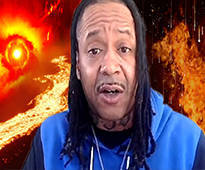
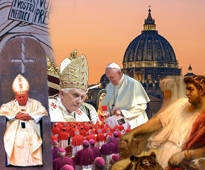
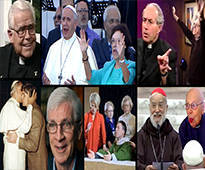
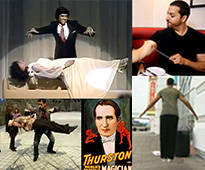


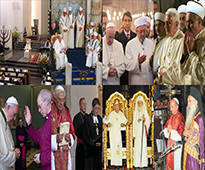


 " />
" />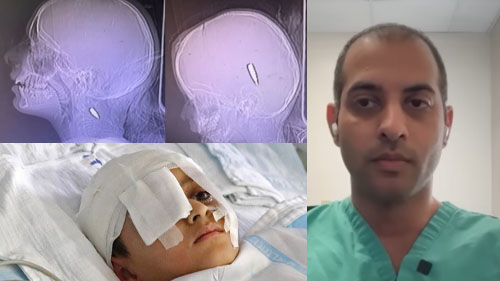 " />
" />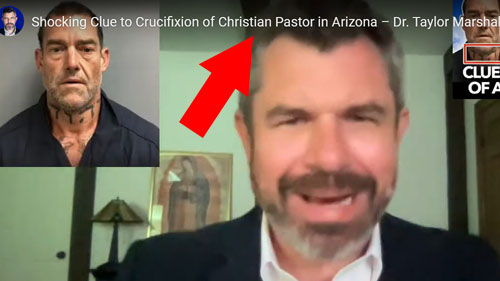 " />
" /> " />
" />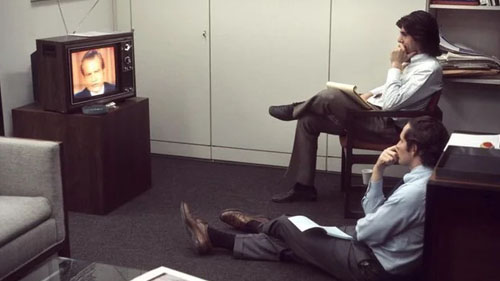 " />
" />




The Errors of the Current St. Benedict Center
The St. Benedict Center was founded by Fr. Feeney before Vatican II. As I have documented, it was a beacon of truth on the salvation dogma when the Fr. Feeney controversy erupted in Boston. But the fact that Fr. Feeney staunchly defended this truth on salvation during his day does not mean, of course, that everything he said on the topic was cogent or correct. He was, in fact, mistaken in his belief that catechumens could be justified (put in a state of grace) by the desire for water baptism. Fr. Feeney knew that the Catholic Church infallibly teaches that no catechumen can be saved without water baptism (Council of Trent, Can. 5 on the Sacrament), but he erroneously thought that the Council of Trent taught that catechumens could be justified by the desire for baptism, when it didn’t (See the section on Sess. 6, Chap. 4.). This mistaken position – which I believe was held by him in good faith and which he would have changed if he were today presented with the evidence and the argument showing that Trent does not teach that catechumens can be justified – caused him to be unable to explain the situation of the so-called “justified” catechumen who hadn’t been baptized.
Fr. Feeney was caught in an insoluble dilemma because of his mistaken and incorrect position that a catechumen can be justified without water baptism. And the liberal heretics have a field day with this passage of his book, and they literally spill pages worth of ink gleefully pointing out that Fr. Feeney was inconsistent on this point. By doing so, however, they only demonstrate their profound bad will and; for whereas Fr. Feeney did make a mistake on this point of Justification (I believe in good faith), the liberal heretics who feign concern for doctrinal integrity in pointing out this mistake don’t even believe that one needs to be a Catholic or believe in Christ to be saved! They hold that Jews, pagans, heretics, schismatics can all be saved without baptism or the Catholic Faith. Thus, to put it simply: the liberal heretics try to cover up for their own heretical belief that non-Catholics can be saved by focusing page after page after page after page on this one mistake of Fr. Feeney, while they dishonestly fail to address Fr. Feeney’s main point, which was that they are denying the dogma Outside the Church There is No Salvation and are complete heretics and doctrinal perverts.
So, don’t be fooled by the heretical priests and bishops who pretend to give an entire course on Fr. Feeney’s Justification error without addressing their own beliefs on whether non-Catholics can be saved; they are just covering up for their own horrible heresy. Bishop Clarence Kelly of the Society of St. Pius V, for example, produced a long document and gave a lengthy presentation focusing only on the Justification error of Fr. Feeney, while never once addressing his own abominable and heretical belief that Jews, Buddhists, Hindus, Muslims and Protestants can be saved without the Catholic Faith (but more on the SSPV later)!
Fr. Feeney’s error on Justification, however, has become a major problem for some; namely, the current members of the St. Benedict Center in New Hampshire. The current members of both St. Benedict Centers affirm communion with the Vatican II sect and bishops who completely reject Outside the Church There is No Salvation. They are, therefore (and most unfortunately) in heresy for obstinately affirming communion with heretics who deny this and other dogmas. Besides this, the Richmond, NH St. Benedict Center obstinately refuses to correct Fr. Feeney’s error on Justification and even condemns us as “heretical” for our position!
In May of 1999, the St. Benedict Center (Richmond, NH) accused us in their newsletter of holding a “strange heresy.” They hold that while baptism is absolutely necessary for salvation by divine law, one can be regenerated (justified/born again) by the mere desire for baptism. They follow Fr. Feeney’s own erroneous conclusion in this regard. They believe in a baptism of desire that justifies but does not save, and they call our view that there is no justification at all without baptism heretical. The falsity of such an assertion by the modern-day St. Benedict Center in New Hampshire becomes very clear when this topic is examined more deeply. For example, they accuse us of holding a “strange heresy” when this was the teaching of St. Ambrose (not to mention Catholic dogma, as we will see).
What’s amazing about this is that the St. Benedict Center (Richmond, NH) even quotes this very passage from St. Ambrose in their book to prove their position (e.g., Father Feeney and the Truth about Salvation, p. 132). So this position – that one cannot be justified without baptism – is put forward as true by the St. Benedict Center when they quote St. Ambrose; but in their newsletter they call this very same position a “strange heresy” because they feel like attacking Most Holy Family Monastery. What incredible hypocrisy!
This means that the St. Benedict Center holds that, by the mere desire for baptism, one can: be born again; be adopted as a son of God; be regenerated; have his original sin remitted; have his actual sins remitted; be united with Christ; possess the infused virtues of faith, hope and charity; receive the application of the Blood of Christ; and receive the Spirit of Sanctification. This is what Justification brings about in a soul, according to the infallible teaching of the Catholic Church. And all of this can occur by the mere desire for baptism, according to the St. Benedict Center, even though they hold that this same person must receive the Sacrament of Baptism in order to be saved.
As stated already, there is no doubt that many members of the St. Benedict Center, including Father Feeney himself, held this erroneous position in good faith in the past. They misunderstood the Council of Trent’s teaching in Sess. 6, Chap. 4 on Justification. They thought that this Chapter was teaching that Justification can take place by the desire for baptism (and they knew that Trent excluded the possibility of salvation without actually receiving baptism), so they concluded that justification can take place by the desire for the Sacrament of Baptism, but that salvation can only come from actually receiving Baptism. Their writings are filled with the distinction between justification and salvation.
Even though this erroneous position may have been a sincere attempt to uphold the Church’s teaching on the necessity of Baptism for salvation (in the face of what they mistakenly thought was the Church’s teaching on desire being sufficient for justification), there are many problems with this explanation.
1) Trent doesn’t teach that the desire for baptism is sufficient for Justification. This has been shown in this document. And this was the root cause of their erroneous belief.
2) In Justification, the Spirit of Sanctification and the Blood of Redemption cannot be separated from the water of baptism (de fide). As has been shown already, Pope St. Leo the Great eliminates the St. Benedict Center’s entire theory.
It is defined dogma that no one can be Justified without the Blood of Redemption (Trent, Sess. 5 and 6, Denz. 790; 795). Pope St. Leo defines that in Sanctification, the Spirit of Sanctification (Justification) and the Blood of Redemption are inseparable from the water of baptism. This means that there can be no Justification – no application of the Blood of Redemption – without water baptism (de fide). There can be no Justification by desire.
The St. Benedict Center holds that a sinner can have the Spirit of Sanctification and the Blood of Redemption by desire, without water baptism, and are therefore contradicting this dogmatic pronouncement.
3) Outside the Church there is no remission of sins (de fide). The St. Benedict Center holds that an unbaptized catechumen is outside the Catholic Church (which is correct, since only Baptism makes one a member). Proof that this is their belief is found on page 77 of their book, Father Feeney and the Truth about Salvation. But while they profess that it is only through Baptism that one can be inside the Church, they hold that an unbaptized catechumen can have Justification (remission of sins and sanctifying grace) by his desire for baptism, while he is still outside the Church. This is directly contrary to the ex cathedra definition of Pope Boniface VIII below. It is therefore heresy to say, as they do, that one who is outside the Church can have his sins remitted.
Some of the defenders of the St. Benedict Center have argued that only the end of the Bull Unam Sanctam is solemn (and therefore infallible), not the part quoted above. This is a desperate attempt to defend their false position on Justification, and it is proven wrong by Pope Pius XII.
Pope Pius XII is referring to the part of Unam Sanctam which the defenders of the St. Benedict Center argue is not solemn (infallible), and he says that it is “solemn” (infallible). This demonstrates that the part of the Bull quoted above is indeed solemn and infallible. In fact, the paragraph of Unam Sanctam that Pius XII is referring to in Mystici Corporis incorporates even less solemn language than the paragraph quoted above on outside the Church there is no remission of sins. The bottom-line is that the teaching of the Bull on Faith is an ex cathedra pronouncement which no one can deny. The St. Benedict Center denies it by their position that catechumens can be justified outside the Church.
4) The Justified are heirs according to hope of life everlasting (de fide). The Church teaches that one who is justified is an heir to heaven. This means that if one dies in a state of Justification he will go to heaven. The St. Benedict Center teaches that one can be justified without baptism, but such a person still isn’t an heir to heaven because he hasn’t received baptism yet. This position contradicts dogma.
The true position is that every truly justified person is indeed an heir to heaven (de fide) and will go to heaven if he dies in that state, because only the baptized are truly justified from sin.
5) The Justified have fully satisfied the divine law and have merited heaven according to their state in life (de fide). This one really crushes the St. Benedict Center’s position.
The St. Benedict Center’s position is that a person justified without baptism is not yet in a state worthy of salvation and has not yet merited heaven. He still needs to fulfill the divine law requiring baptism, according to them. Remember, they constantly focus on the distinction between justification and salvation. But the Council of Trent contradicts this by asserting that the justified have fully satisfied the divine law and have merited eternal life to be obtained in its own time (if they shall have departed this life in grace). Nothing more is needed for the justified to get to heaven; they need only to maintain the state of Justification and die in it. This is not consistent with the St. Benedict Center’s position, but it is consistent with the teaching of the Church (e.g., Pope St. Leo the Great) that no sinner can be justified without the Sacrament of Baptism. This quotation from Trent actually blows the St. Benedict Center’s position away.
6) The possession of faith, hope and charity makes one a member of Christ’s Body (de fide). From Trent’s definition on the Justification of the sinner, one learns that it is not possible for a sinner to possess the infused, supernatural virtues of faith, hope and charity without being a member of Christ’s Body. These virtues are infused at the time of Justification.
This means that if hope and charity are added to faith, faith does unite one perfectly with Christ and make him a living member of Christ’s body. This is not consistent with the St. Benedict Center’s position, because they hold that it’s possible for hope and charity to be united with faith in a justified catechumen who is not a member of Christ’s body.
Since these errors that I have described deal with finer points of this issue, there is no doubt that many supporters of the St. Benedict Center have held – and some still may hold – these errors in good faith, while affirming the dogma that the Catholic Faith and Baptism are necessary for salvation. However, they cannot lawfully hold these errors after they have been pointed out to them. And unfortunately, the current day leaders of the St. Benedict Center, as well as many of its affiliates, members and writers, refuse to correct themselves, and must be considered heretical. Further, they bring down on their heads definite condemnation when they condemn the teaching of the Church described above as a “strange heresy,” as they did in their newsletter. We pray that the affiliates of the St. Benedict Center will change their position on these matters, as well as their heretical allegiance to the Vatican II sect, because they have endured unjust persecution from heretics who hate the dogma Outside the Catholic Church There is No Salvation and Our Lord Jesus Christ’s doctrine on the necessity of Baptism.
Endnotes:
[1] Jurgens, The Faith of the Early Fathers, Vol. 2: 1330.
[2] Decrees of the Ecumenical Councils, Vol. 1, p. 81.
[3] Denzinger 468-469.
[4] The Papal Encyclicals, Vol. 4 (1939-1958), p. 45.
[5] Denzinger 799.
[6] Decrees of the Ecumenical Councils, Vol. 2, p. 678; Denz. 809.
[7] Denzinger 800.
Sign up for our free e-mail list to see future vaticancatholic.com videos and articles.
Recent Content
^